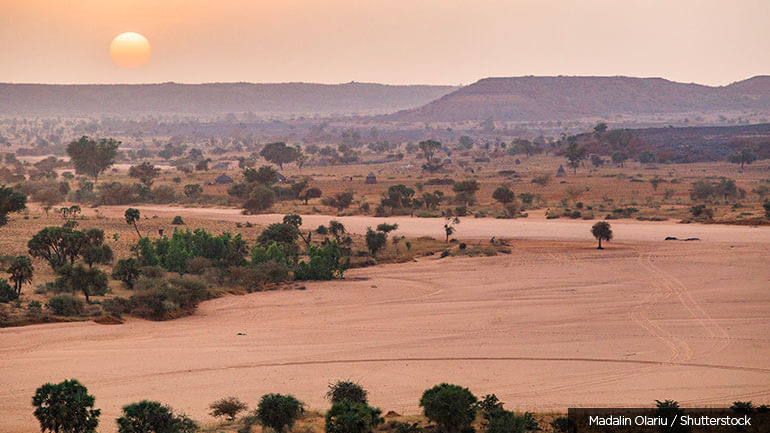
Context
This regional program aims to regreen and restore land productivity and build climate resilience of the Sahel, most notably in Burkina Faso, Chad, Mali, Mauritania, and Niger. By adopting a landscape approach to restoration and rehabilitation, this initiative builds on a decade of experience from the Sahel and West Africa Program (SAWAP). It integrates updated analytics and innovative technologies to support countries in aligning their environmental commitments with national policies. This program is particularly crucial for post-COVID recovery efforts, addressing the intertwined challenges of environmental degradation and poverty in a region where are temperatures are increasing 1.5 times faster than the global average and climate change impacts are felt acutely.
Approach
PROGREEN’s regional knowledge program is structured around two main components:
1. Creating an enabling environment: This includes providing technical assistance, conducting analytical work, and enhancing capacity building to foster integrated landscape approaches.
2. Scaling up restoration activities and livelihood activities: Targeted technical assistance and investments in Burkina Faso aim to expand land restoration and local livelihoods.
The components support countries in adopting a landscape approach across the environment and climate, water, and agriculture nexus, to address growing pressures on land, water, and other resources to accommodate the needs of present and future generations. The approach facilitates the simultaneous framing of development and conservation goals and will aim to develop a common approach to planning, monitoring, communication, and knowledge dissemination by using existing tools, such as the Geo-enabling Initiative for Monitoring and Supervision (GEMS), the IUCN Restoration Opportunities Assessment Methodology (ROAM), and platforms (such as TerrAfrica, GGWI).
PROGREEN has leads an investment program, as part of the Communal Climate Action and Landscape Management, which is working to reduce pressure on common resources and create economic opportunities for rural populations in targeted communes across Burkina Faso.
Results
PROGREEN’s knowledge program actively supports women's participation in economic activities, providing training to 409 women in the shea butter value chain. The knowledge program on landscape restoration covers the Sahel region, aiming to strengthen monitoring tools and promote investments.
Since 2023, disruptive technologies have been implemented to monitor ecosystems, including a 360-3D model of the OROA Reserve for highlighting sustainable landscape management in Chad. In Mauritania, the program informed the development of landscape management manuals and a framework for integrated landscape management plans. Additionally, it produced a number of educational materials, including eight videos on land restoration and climate resilience, which have been shared widely across the region.
PROGREEN’s investment program, as part of the Communal Climate Action and Landscape Management Project, continued to support the government with improving landscape-related policies and fostering multisectoral approaches. Two technical studies were completed to enable the adoption of forest-smart mining principles and assist with making informed investment decisions regarding the agro-silvo-pastoral system. In addition, PROGREEN supported the first wave of municipal investment plans, with 22 of these plans successfully securing project grants to enhance income generation for the most vulnerable. These grants will enable nearly 350 investments that will benefit sustainable agro-silvo-pastoral production and ensure the sustainable management of 49 village forests and grazing areas, reaching more than 436,000 beneficiaries across 166 villages.